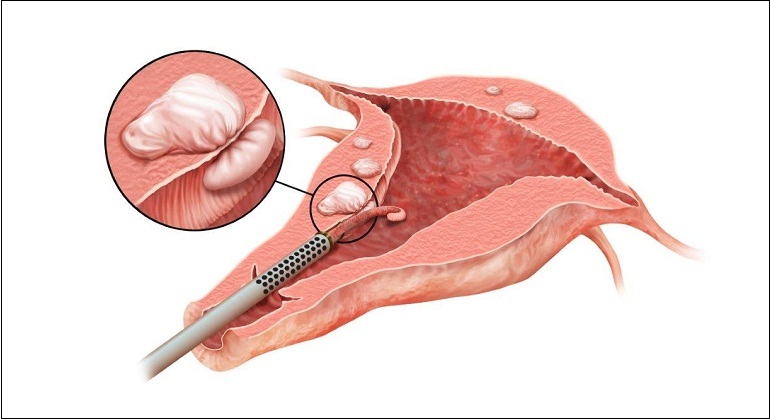
Laparoscopic Myomectomy uses a small telescope placed through the belly button along with several small instruments to remove fibroids from the uterus. The technique of actually removing the fibroid from the uterus is similar to that of an abdominal myomectomyexcept we use small instruments placed through the abdominal wall. Once the fibroid is freed from the uterus it needs to be removed from the abdomen. In order to remove a large fibroid from a small incision we use an instrument called a morcellator, to cut it into pieces small enough to be removed through the small incisions.
The more superficial a fibroid is the easier it is to remove laparoscopically. Pedunculated fibroids are the easiest. Care must be taken not to damage the underlying myometrium (the wall of the uterus) with energy used to seal the blood vessels, as rupture during pregnancy has been reported when this happened. Deep fibroids that protrude into the cavity of the uterus (submucous myomas) are the most difficult to take out laparoscopically.
The advantage of laparoscopic surgery is that a larger incision is replaced by several smaller incisions. Recovery is generally faster than if a regular incision is made, but this can vary. There are some disadvantages of laparoscopic surgery, also. Taking out large fibroids can take much longer when done through a laparoscope. It is more difficult to take out a large number of fibroids. It may not be possible to get as good of a repair for large or deep fibroids. This would be more important for women desiring fertility. The question you should ask is not if a laparoscopic myomectomy can be done but if it is best for your individual situation.
The more superficial a fibroid is the easier it is to remove laparoscopically. Pedunculated fibroids are the easiest. Care must be taken not to damage the underlying myometrium (the wall of the uterus) with energy used to seal the blood vessels, as rupture during pregnancy has been reported when this happened. Deep fibroids that protrude into the cavity of the uterus (submucous myomas) are the most difficult to take out laparoscopically.
The advantage of laparoscopic surgery is that a larger incision is replaced by several smaller incisions. Recovery is generally faster than if a regular incision is made, but this can vary. There are some disadvantages of laparoscopic surgery, also. Taking out large fibroids can take much longer when done through a laparoscope. It is more difficult to take out a large number of fibroids. It may not be possible to get as good of a repair for large or deep fibroids. This would be more important for women desiring fertility. The question you should ask is not if a laparoscopic myomectomy can be done but if it is best for your individual situation.
